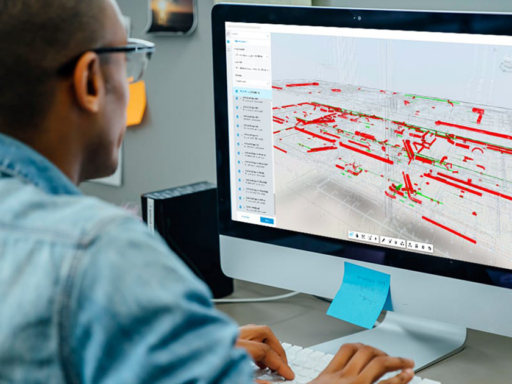Introduction
In this blog post, we will explore how to implement BIM at the beginning of a project. In addition, where BIM can be utilized to all your projects. The benefits of BIM, and practical tips for successful implementation.
“Starting BIM at project onset can pave the way for up to a 20% reduction in overall project costs“– Stephen A. Jones, McGraw Hill Construction Senior Director.
Highlights
- Understanding the concept of BIM as a methodology, not just a software
- Exploring the different phases of a project where BIM can be utilized
- Addressing common concerns and misconceptions about implementing BIM
- Emphasizing the importance of having a clear understanding of the “why” before implementing BIM
Implementing BIM in a project
Implementing Building Information Modeling (BIM) can greatly benefit your business. By following these steps, you can ensure a smooth transition to BIM technology and optimize your processes.
- BIM implementation: Understand the importance of BIM implementation and stay updated with industry trends to keep your business competitive.
- BIM implementation phases: Follow the standard procedures outlined in the four important phases of BIM implementation to ensure a successful transition: diagnose, plan, execute and consolidate.
- BIM implementation plan: Design a comprehensive implementation process that includes a map of all BIM uses and their interconnections.
- Optimize processes: Continuously reevaluate your BIM implementation to find ways to further optimize your processes.
To successfully implement BIM, it is crucial to have the willingness and capability within your organization. By following these steps, you can ensure a successful implementation of BIM and reap its benefits for your business.
The Concept of BIM
BIM involves creating digital twin 3D models with integrated data, allowing for the production of drawings and the inclusion of detailed information about the elements within the model.
BIM can be utilized in various phases of a project, including planning, concept, design, preconstruction, construction, operation, management, maintenance, and even demolition. The flexibility of BIM allows for seamless integration at different stages of a project, providing valuable insights and data throughout the project lifecycle.
“BIM is not a software; it’s a methodology that revolutionizes the way we approach construction projects.”
– Valentina Jaimez, BIM Architect
Overcoming Misconceptions
One common concern about implementing BIM is the fear of job displacement or the notion that traditional methods like AutoCAD and 2D drawings will become obsolete.
According to data from Dodge Data & Analytics, in 2022, approximately 32% of construction professionals in the United States reported using BIM in more than 60% of their projects.
“Implementing BIM is not about replacing existing tools overnight but about strategically integrating a new methodology for long-term benefits.” – Valentina Jaimez, BIM Architect
It’s essential to understand that proficiency in software like Revit or Civil 3D does not equate to understanding BIM. Successful implementation requires adherence to standards, proper naming conventions, and the development of a BIM execution plan tailored to the project’s needs.
Leveraging the Advantages of BIM
The centralized information and collaborative nature of BIM make it particularly beneficial for larger projects involving multiple teams across different locations. The ability to access a single source of information and have real-time updates streamlines communication and enhances efficiency, especially when dealing with complex construction projects.
Valentina Jaimez highlights the proactive nature of BIM, allowing teams to anticipate and address potential issues before they escalate during the construction phase. This foresight can lead to significant time and cost savings, making BIM a valuable asset for project management and execution.
“BIM’s centralized information and collaborative features pave the way for smoother communication and proactive issue resolution in construction projects.” – Valentina Jaimez, BIM Architect
Conclusion
Understanding when to implement BIM in a project is a nuanced decision that hinges on the specific needs and goals of the project. By grasping the core concepts of BIM as a methodology, dispelling common misconceptions, and leveraging its collaborative advantages, project stakeholders can make informed decisions about integrating BIM into their workflows. Ultimately, having a clear understanding of the “why” behind implementing BIM is crucial for maximizing its benefits and driving project success.
Implementing BIM is a complex process that requires constant reevaluation. By staying up to date with industry trends and news, you can ensure that your business is aware of the ever-evolving changes in the field. This will enable you to find new ways to optimize your processes and stay ahead of the competition.
- Constantly reevaluate your BIM implementation process to ensure its effectiveness.
- Stay informed about industry trends and news to keep up with the latest developments.
- Continuously seek opportunities to optimize your processes and improve efficiency.
To successfully implement BIM, it is essential to have a clear understanding of the basics and the implementation process. By following these tips and staying proactive, you can ensure that your business maximizes the benefits of BIM and stays at the forefront of the industry.






